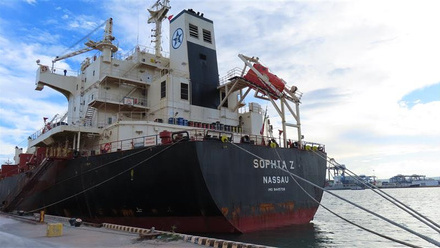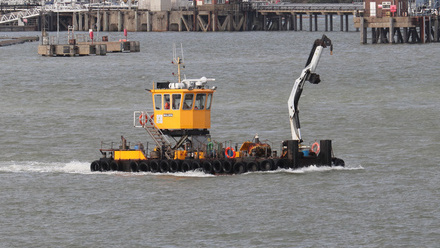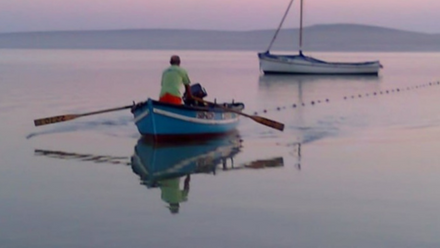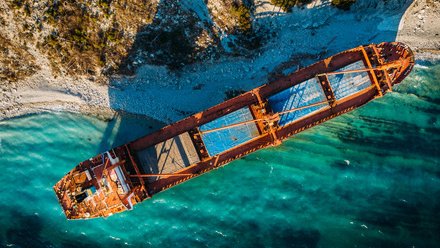Incident on board Berge Mawson leads to loss of three lives
Entry into confined spaces remains a significant cause of accidents on ships.
In June 2022, three stevedores succumbed to a noxious atmosphere in an enclosed cargo hold space. A subsequent UK Marine Accident Investigation Branch (MAIB) investigation, conducted on behalf of the Isle of Man Ship Registry, laid bare a sobering pattern of safety breaches that allowed this incident to occur.
As is so often the case with this type of tragedy, two of the deaths occurred as a result of a heroic impulse to rescue a colleague in danger – something which, in the case of enclosed spaces, can turn the most selfless elements of human nature against them. Berge Mawson joins similar tragedies aboard Iron Queen, Suntis, and Saga Frontier; fatalities caused by oxygen depleted atmospheres in confined spaces.
Berge Mawson, a post-panamax bulk carrier IMO # 9738868 flagged to the Isle of Man, arrived at Indonesia’s Bunyu Island anchorage in mid-June 2022 to load 150,000 tonnes of coal. As well as a floating crane, the operation involved the use of bulldozers for the purpose of evening out the surface of the cargo, as is normal in dry bulk loading operations to prevent cargo moving during the sea passage.
On 27 June at 08:40 WIB (Western Indonesian Time, GMT+7), Berge Mawson’s No.8 hatch was fully loaded and closed, and work was transferred to load coal into hold No.7. However, the process was interrupted by a tropical downpour, as it had been several times throughout the vessel loading operation.
Once the rain had passed, a bulldozer operator, referred to in the report as Bulldozer Operator 2, arrived on deck to resume working. CCTV footage recorded him descending into hold No.7 before moving mistakenly to hold No.8 and opening it to make entry.
What he did not know is that this incorrectly entered space had become lethally oxygen-depleted – with high levels of methane, and carbon monoxide, where the stevedore was later discovered unconscious.
When the assistant foreman realised that no bulldozer had been operating for some time raised the alarm via his radio after searching hold No.7 before seeing the hatch to hold No.8 was open. The vessel’s second officer told the assistant foreman that no one should enter that space and rushed off to raise the alarm and retrieve rescue equipment.
But by the time the crew returned, it was too late. Another stevedore and the assistant foreman had descended the ladder into cargo hold No.8 forward cargo access space, in an attempt to rescue their colleague, and had quickly succumbed to the toxic environment of the hold.
By the time the ship’s rescue team arrived, all three men were unconscious. Efforts to resuscitate them with oxygen and CPR were in vain. The three were transported ashore, and later declared dead.
Lessons learned
The MAIB investigation found that the stevedores entered what is classified as an enclosed space, which can be potentially dangerous to human life. No atmospheric testing, nor appropriate ventilation, had been undertaken before the stevedores entered the completed and closed hold.
The report also found: “The stevedores working on board Berge Mawson were ineffectively supervised and their safety was not managed; the access points to Berge Mawson’s enclosed spaces were not secured while the stevedores were working on board, so unauthorised access into cargo hold access spaces was not prevented; the stevedores had little or no understanding of the safety warnings and enclosed space signage. They were unaware of the inherent risk of entering the cargo hold access spaces.”
The crew of Berge Mawson, meanwhile, had been trained on rescuing crewmates from enclosed spaces, as evidenced by them retrieving relevant breathing equipment. Yet their procedures did not account for third-party personnel like stevedores.
“Although Berge Mawson’s crew were well-trained in their emergency response to enclosed space accidents, their drill scenarios did not involve shore workers who could be on board at the time,” stated Chief Inspector of Marine Accidents, Andrew Moll OBE.
“In the crew’s rush to collect rescue equipment they left the entry point to an enclosed space containing a noxious atmosphere unguarded, and this oversight tragically led to the second and third stevedores dying in a well-intentioned but misguided attempt to rescue their colleague.”
In the wake of the tragedy, ship manager Berge Bulk Maritime introduced changes including fitting physical barriers to all cargo hold access points and modifying onboard procedures. The companies supplying the stevedores were advised to provide mandatory safety training in accordance with international maritime standards.
The report is a stark reminder of the deadliness of confined spaces at sea, whether for full-time crew members, or third-party workers.
We, at IMarEST, hope that the industry will be made aware of this incident and use it constructively as a lesson to be learned to prevent re-occurrences.
Tell us what you think about this article by joining the discussion on IMarEST Connect.
Image: Bunyu Island jetty area, Indonesia. Credit: Shutterstock.






